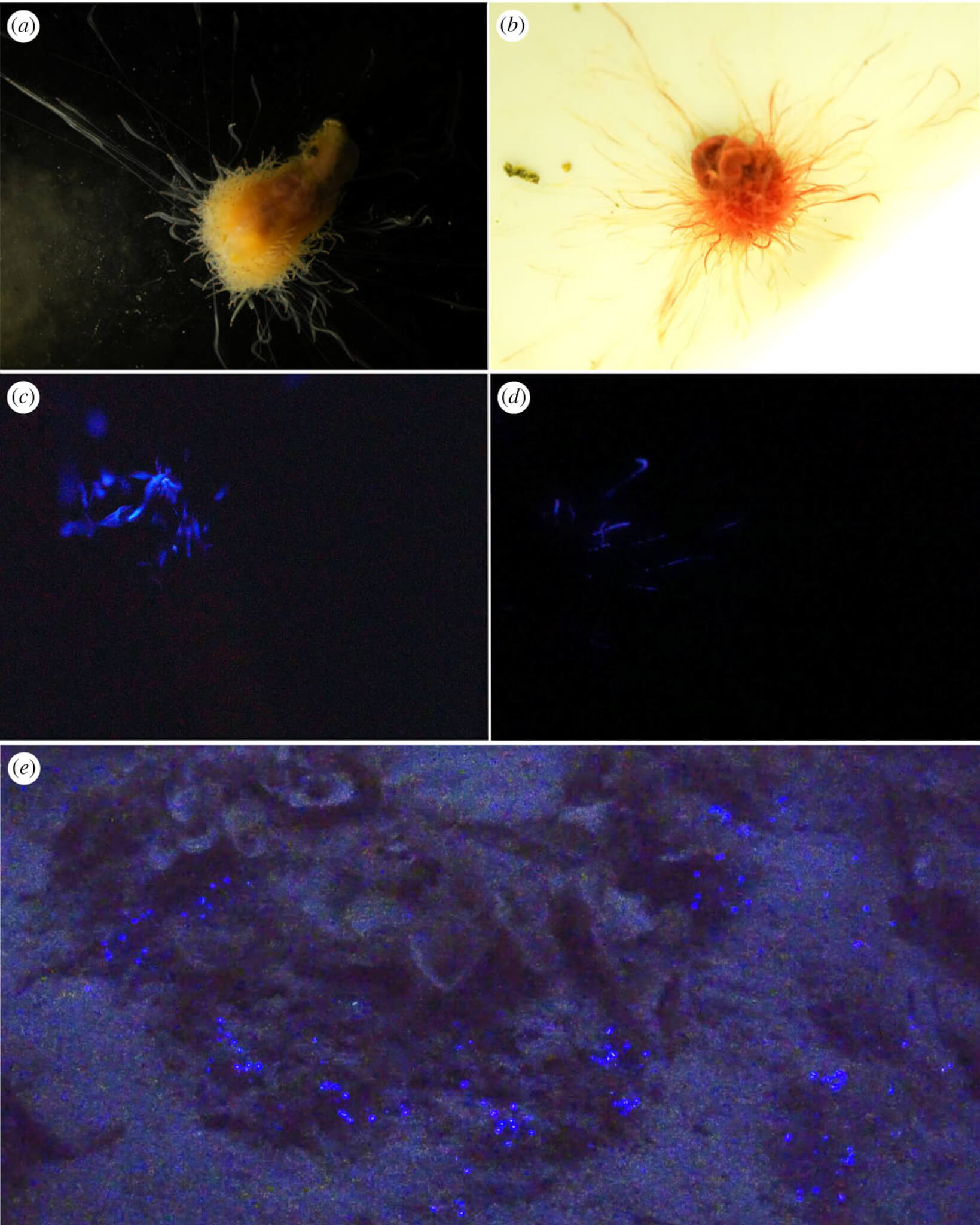NAGOYA, Japan — Japan may be the fictional home of many incredible monsters like Godzilla, but a new study is explaining how it’s also the real-life habitat for a trio of otherworldly creatures as well! Scientists from Nagoya University say they have found three new species of bioluminescent Polycirrus worms around the country — meaning they actually glow in the dark. While they may not appear in the next blockbuster monster movie, researchers are giving them some Hollywood-style names — taking their inspiration from the creatures of Japanese folklore!
These kinds of worms typically live in shallow water and are well known for their bioluminescence. However, scientists have only studied a tiny fraction of the over 7,000 luminescent lifeforms scattered throughout the world. Researchers note that many of them are difficult to classify, limiting the amount of comparative research on these animals.
Study authors Naoto Jimi and Manabu Bessho-Uehara discovered that all three of these new species emit blue-violet light in their watery environments. The team also worked with members from AIST, Olympus Corporation, and Japan Underwater Films Corporation, which organized Polycirrus according to their diversity.
“Our previous research on the luminescence of the genus Polycirrus had established it as a valuable subject for bioluminescence studies,” says Jimi in a media release. “However, we later discovered what we thought was a single species of Polycirrus was actually three different species.”

The worms are named after demons and ghosts — and a biologist
Since the discoveries took place in Japan, the team named two of the glow-in-the-dark worms after a pair of creatures from Japanese folklore. Polycirrus onibi and Polycirrus aoandon take their names from the supernatural entities onibi (demon fire) and aoandon (blue lantern) — also known as yokai.
Onibi describes a will-o’-the-wisp type of yokai. Researchers say onibi is basically a small, floating ball of light that leads travelers in mountains and forests away from their path. Aoandon, on the other hand, has a more terrifying appearance. The ghost-like yokai appears as a woman wearing a white kimono with horns and sharp teeth. Folklore claims it haunts the lanterns in Japanese homes by turning their light an unnatural blue color.
Meanwhile, researchers named the third worm Polycirrus ikeguchii, in honor of Shinichiro Ikeguchi, the former director of the Notojima Aquarium.
“We used the names of Japanese yokai, such as onibi and aoandon, for the new species because the hazy violet-blue bioluminescence emitted by the Polycirrus species is strikingly similar to the descriptions of these creatures found in folklore,” Jimi explains. “Polycirrus ikeguchii, on the other hand, was described from specimens collected in the Notojima region in Japan. As Shinichi Ikeguchi was the former director of Notojima Aquarium and helped to find the worm, it seemed appropriate to name it after him.”

What’s next after finding these worms?
Study authors hope their discoveries help scientists develop new technologies which can use this bioluminescent property.
“The discovery that all three new species are luminescent has allowed us to link taxonomic and ecological findings and establish research that others can readily apply to the study of luminescent organisms,” Jimi concludes. “Understanding these luminescence mechanisms contributes to medical and life science research. Bioluminescence is a treasure trove of interesting and unusual chemistry. We intend to use our findings to deepen our understanding of the molecular nature of this phenomenon and apply this knowledge to the development of new life sciences technologies.”
The team has published their findings in the journal Royal Society Open Science.

